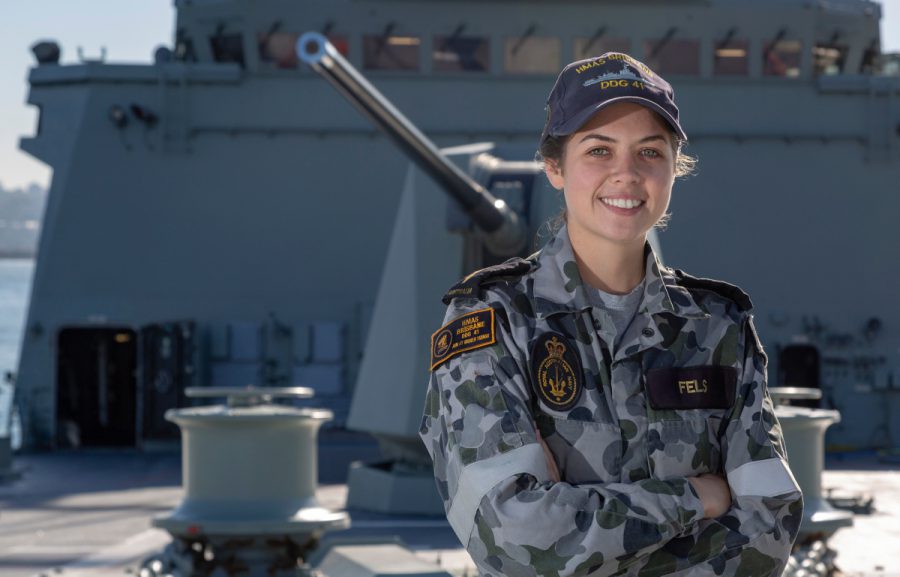
Today, ASPI launched its third annual Strategic Insights paper on women, peace and security. As this publication has evolved, we have seen a shifting focus in the themes covered by contributors. The articles in this year’s series have a strong focus on Australia’s engagement in the Pacific and emerging security challenges such as cyber security, health security, climate instability and resource management.
Considering Australia’s endeavours to ‘step up’ in the Pacific and an increasingly uncertain and contested strategic environment, articles like these provide insightful guidance for policymakers.
Writing for this year’s series, NATO Secretary-General’s Special Representative for WPS Clare Hutchinson looked to Lewis Carroll’s Through the Looking-Glass to find an explanation for why gender equality has never been achieved—‘It’s jam every other day: to-day isn’t any other day’. It’s never jam (or gender equality) today. Other articles have sought to unpack how to make sure we get jam today.
Alison Davidian put our region’s approach to managing natural resources and the effects these industries have on women in the spotlight. She suggests that mining companies can do better when negotiating access to land and that a more equitable distribution could be achieved by rooting policies and development programming in the WPS agenda.
The role of women in conflict was also examined further in this year’s series, with debate over how best to deal with the return of female combatants and supporters. Helen Stenger and Jacqui True unpacked this issue, saying there’s a need to recognise women’s agency in supporting terrorist groups but also to understand that women’s roles can’t simply be reduced to the choice between victim and perpetrator. As the Australian approach continues to evolve, they argue it requires a more nuanced understanding and response.
On the operational side, Australian Navy captain Stacey Porter looked at how and why it’s important to operationalise WPS in combat zones and offered real, pragmatic examples of gender integration boosting military effectiveness. Vanessa Newby similarly looked at how WPS is operationalised through the deployment of female peacekeepers, highlighting the vital role women can play in making operations more effective, but also noting that UN peacekeeping is the sum of its parts and that changing its culture requires a change in the military culture in contributing countries.
Elsewhere, we turned to more emerging security trends. Betty Barkha looked at the nexus of the youth, women and climate agendas, highlighting the increasingly important role of youth in implementing and fighting for these agendas. Jacqueline Westermann looked at the intersection between gender and climate insecurity in the Pacific, arguing that Australia needs to more meaningfully engage on this issue and support local initiatives.
The consideration of health security and cybersecurity was new this year. Sara E. Davies analysed how lessons from the implementation of the WPS agenda in local communities could be adapted to global health governance for more equitable changes to hierarchical health security structures. ASPI’s Lisa Sharland and Hannah Smith delved into the cyber sphere, arguing that not only do Australia’s security agencies and the private sector need to increase the number of women working in cybersecurity, but they also need to ensure they are integrating gender perspectives and more diverse thinking into the design and development of technology.
At the end of last year’s series, Lisa Sharland looked at four ways Australia needed to improve its approach to and implementation of the WPS agenda: an increased focus on the domestic dimension of the WPS agenda; sustainable funding and accountability; inclusion of WPS at the core of formulating foreign affairs and defence policy on international security; and greater recognition of the need for a diversity of voices on this issue. Australia will be releasing its second NAP on WPS in the coming months. In this context, these four suggestions continue to offer valuable guidance.
Building on these suggestions, in this year’s series, Miki Jacevic offered detailed advice on the creation and implementation of effective national action plans for WPS, emphasising the importance of inclusiveness in developing these plans. Sue Harris Rimmer looked specifically at the opportunities for Australia’s second NAP in the context of the Pacific pivot. She considered how to best align our actions in the region with our commitments to the agenda while pursuing our engagement there in the spirit of true partnership and respect.
Next year, the 20th anniversary of the first UN Security Council resolution on WPS will be a key milestone for taking stock of the achievements that have been made and what still needs to be done. Louise Allen traced key moments in the development of the agenda over the past two decades, but noted that the current lack of political will presents a significant obstacle to the WPS agenda. Elise Stephenson analysed the representation of women in international affairs in Australia’s public sector, noting that we have never had gender equality in this field, and that as we draw closer to this key anniversary we need to question whether the structures in the current system are truly conducive to achieving parity.
Importantly, the series this year reminded us that we can’t afford to be complacent. Negotiations at both the Commission on the Status of Women in March and at the Security Council in April reflect some of the challenges facing the agenda, with efforts to roll back previously agreed language and wavering support among some traditional allies. In the face of these normative challenges, there’s an ongoing need to share lessons and to analyse and understand how women contribute to peace and security and why diverse gender perspectives need to be factored into Australia’s approach to foreign policy, defence operations and national security.

